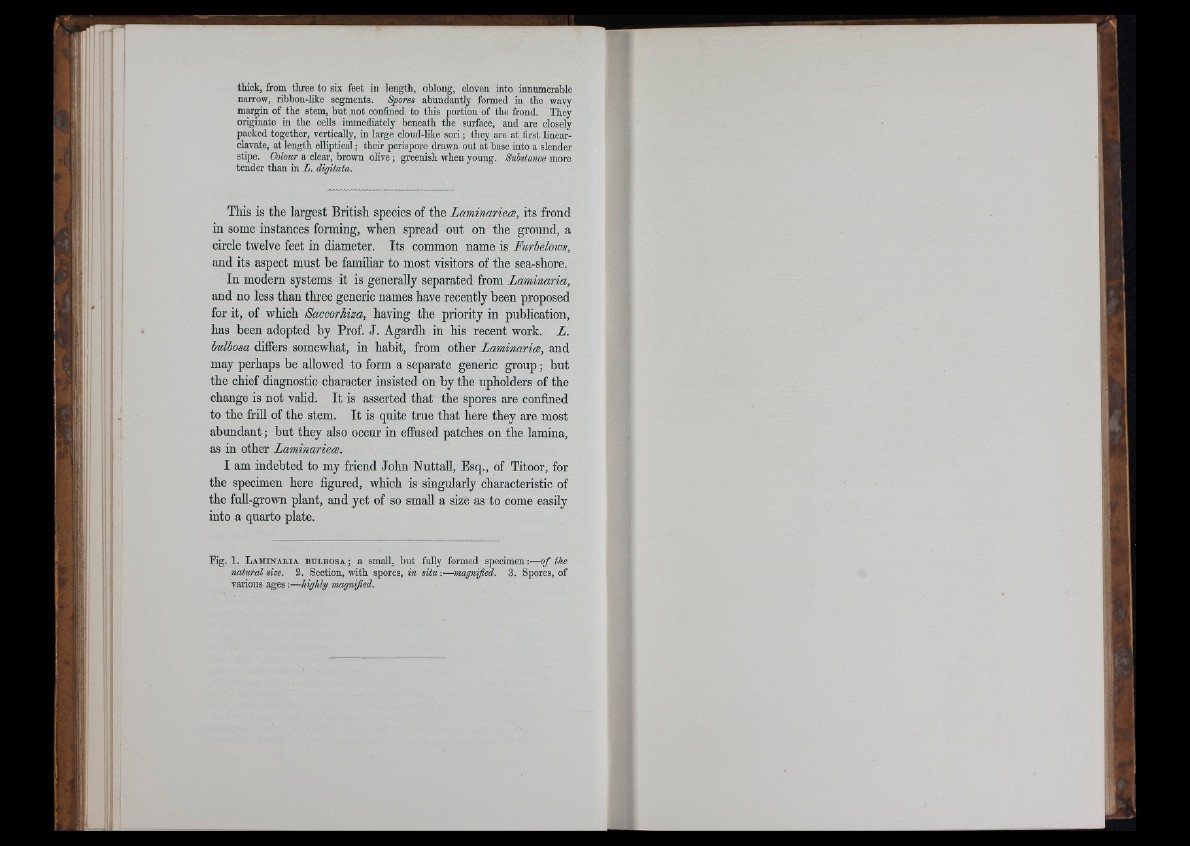
thick, from three to six feet in length, oblong, cloven into innumerable
narrow, ribbon-like segments. Spores abundantly formed in the wavy
margin of the stem, but not confined to this portion of the frond. They
originate in the cells immediately beneath the surface, and are closely
packed together, vertically, in large cloud-like sori; they are at first linear-
clavate, at length elliptical; their perispore drawn out at base into a slender
stipe. Colour a clear, brown olive; greenish when young,
tender than in Z. digitata.
This is the largest British species of the Laminariets, its frond
in some instances forming, when spread out on the ground, a
circle twelve feet in diameter. Its common name is Furbelows,
and its aspect must be familiar to most visitors of the sea-shore.
In modern systems it is generally separated from Laminaria,
and no less than three generic names have recently been proposed
for it, of which Saccorhisa, having the priority in publication,
has been adopted by Prof. J. Agardh in bis recent work. L.
bulbosa differs somewhat, in habit, from other Laminarice, and
may perhaps be allowed to form a separate generic group; but
the chief diagnostic character insisted on by the upholders of the
change is not valid. It is asserted that the spores are confined
to the frill of the stem. It is quite true that here they are most
abundant; but they also occur in effused patches on the lamina,
as in other Laminarieee.
I am indebted to my friend John Nuttall, Esq., of Titoor, for
the specimen here figured, which is singularly characteristic of
the full-grown plant, and yet of so small a size as to come easily
into a quarto plate.
Fig. 1. L a m in a r i a b u lb o s a ; a small, but fully formed specimen:—o f the
natural size. 2. Section, with spores, in situ-.-—magnified. 3. Spores, of
vaiious ages:—li'